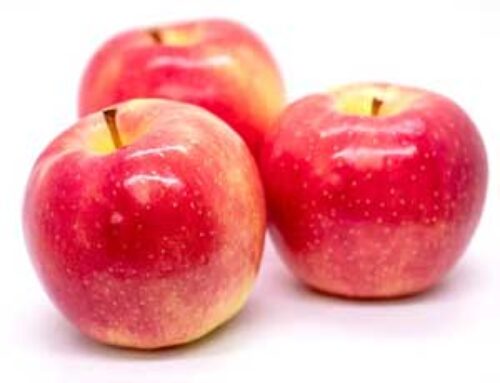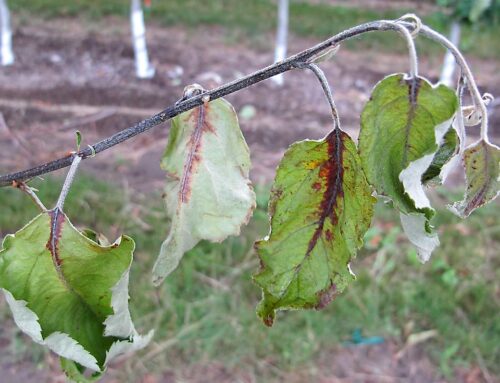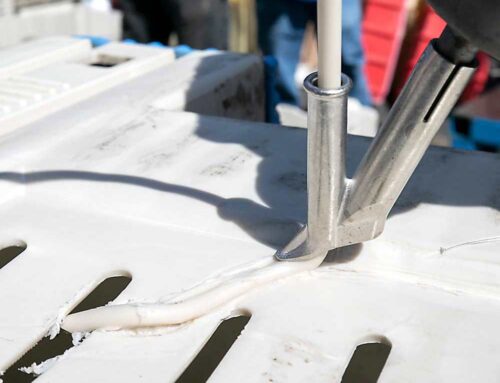Last fall, Dr. Sandy Wasson’s two Labrador retriever dogs became sick after going for a walk in an orchard in Yakima, Washington.
Wasson, a veterinarian in Yakima, soon recognized the problem as strychnine poisoning. She was able to save six-year-old Tor, but seven-year-old Sean died.
“We went through an awful day,” she said. “That type of poison has very distinct symptoms and I’ve seen it before. But having it happen to my own dog was a whole different experience.”
A couple of days later, Wasson retraced their steps through the orchard looking for the source of the poisoning and found piles of turquoise-colored strychnine bait on the ground. “I was so angry it was used so carelessly, so I reported it,” she said. “You could see it from the roadside. Children could have picked it up and wondered what it was.”
Strychnine is an extremely toxic poison that affects the nervous system and causes uncontrolled firing of the nerves that cause muscle movement. This can result in muscle injury, breathing difficulties, violent seizures, and death.
Wasson said she wouldn’t normally blame other people. Her dogs were off leash, she was not on her own property (though she did have the owner’s permission to walk in the orchard), and she feels that her dogs’ safety was her responsibility.
“I can’t be too critical of other people,” she said. “But, nevertheless, that product was being used improperly. This was an illegal use of the product that resulted in the dog’s death and should not have happened.”
Illegal use
She understands that the Washington State Department of Agriculture sent the orchardist a notice of correction, but imposed no fine. The grower said that workers who were applying the bait to control rodents had used the wrong equipment.
Cliff Weed, compliance manager at the Department of Agriculture’s Pesticide Management Division, said strychnine bait can only be applied beneath the ground and anything else is an improper usage.
Anne Swindeman, a fruit industry consultant in Yakima, also recently lost her Labrador retriever Rosa to strychnine poisoning after the dog ate a baited apple in an orchard. Swindeman said the big, red apple, which had milo bait inside, was presumably intended for ground squirrels. It was on the ground in a nonbearing orchard, and she assumes it was dropped there by accident. Nine-year-old Rosa picked it up and ate it, and died five hours later at the emergency vet. A necropsy showed she had twice the lethal dose of strychnine.
“Strychnine is awful stuff,” Swindeman said. “People just don’t understand how toxic it is. This industry is such a bunch of dog lovers—they have big hearts—I know they wouldn’t intentionally want to do anything like that. It’s a matter of education and getting that out to their workers who are putting it out—getting the point across how toxic and deadly this is.”
Wasson said dogs or other animals that are poisoned suffer a horribly painful death. According to information online, soon after ingesting the poison, the dog is likely to suffer intensely painful seizures during which it throws its head back and can’t breathe. The slightest touch or noise starts a seizure. Other signs include tremors, champing, drooling, muscle spasms, collapse, and paddling of the legs.
“We’re not just talking about the dog feeling kind of weak and lying down and dying,” Wasson said. “It is, to me, a very cruel type of poison to use, especially if there’s the risk of pets getting into it. There are lots of orchardists who let their dogs run around with them when they’re picking. It just seems there has to be a better way.” Dogs can be poisoned indirectly if they eat rodents that have died after consuming bait.
Tim Smith, Washington State University Extension educator, said there’s no reason to have bait-filled apples on the orchard floor unless you were trying specifically to kill dogs, because gophers spend most of the time underground. To control voles and other rodents that live above ground, less toxic materials, such as anticoagulants can be used. But a better way to keep them at bay, he suggests, is to remove their habitat by keeping the grass mowed and the weeds controlled in the tree row.
Application methods
Roger Baldwin, University of California Cooperative Extension Wildlife Pest Management advisor, said that in a large area, such as an orchard or vineyard, strychnine bait can be applied with a burrow builder, a mechanical device that creates an artificial burrow and deposits bait in it. The device is pulled by a tractor and should be driven parallel to the tree or vine rows. The idea is that gophers will go along artificial burrows that cross their natural burrows and find the bait. The chances of something other than a gopher coming across and eating the bait are minimal, Baldwin said.
For smaller areas, people use a probe, such as a piece of rebar or wooden dowel to make an opening into the burrow system and pour bait into the hole through a funnel. The hole should be covered with a stone because the gophers like closed tunnels and if it’s left open they will plug it up below the bait, Baldwin said.
Alternatively, a grain bait dispenser can be used. This device has a probe (a tube about three to four feet long) that is inserted into the ground. A twist of the handle meters out a small amount of bait down the tube and into the burrow system.
Other methods
Bait is just one of several methods of controlling gophers. In a study that Baldwin did in a Sonoma County vineyard with an average of 60 gophers per acre, trapping followed by fumigation with aluminum phosphide pellets was the most effective treatment, killing 74 to 90 percent of the gophers. The Rodenator, an explosive device that causes underground shockwaves of concussive force, killed up to 55 percent of the gophers, while strychnine-treated milo bait killed 30 to 56 percent of the gophers. In Washington, body-gripping traps or snares are prohibited for any animals other than mice.






Leave A Comment